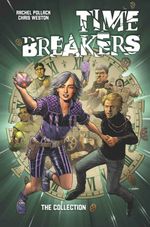A Christmas Carol
Charles Dickens
★★★★★
It’s been ages since I last read the original, and two days before Christmas I wanted a break from Toilers of the Sea, so I figured I’d pick it up again yesterday. And yeah, the story holds up. The emphasis on kindness and charity and human connection makes it timeless, beyond the specifics of poverty in England during the early Industrial Revolution or 19th-century Christmas traditions.
Dickens as narrator is more cheerful in “A Christmas Carol” than he is in heavier works like Great Expectations (though even that has its moments of levity), even when describing Scrooge’s cruelty, the Cratchets’ poverty, or the black market pawn shop where items stolen from his corpse are sold off. The Cratchets making the most of what little they have is of course part of the point, but there’s a sort of perverse he-had-it-coming-to-him glee in the latter scene.
The trickiest part is making Scrooge’s conversion believable, and while I think some screen versions fall into because-the-theme-demanded-it territory, the original makes it work. The spirits cover all the bases of persuasion, sometimes hinting, other times bluntly throwing Scrooge’s own words or actions back in his face. You see just enough of his youth to believe that he could still have some compassion and capacity for joy somewhere, buried deep down, slumbering where they might be rekindled. And you see hints of it beginning as early as Christmas Past. Even if it takes a bunch of ghosts traumatizing him to do it.
Of course, just about every adaptation I’ve seen popped up in my head while reading it, starring everyone from George C. Scott to Mickey Mouse. Patrick Stewart used to perform an amazing one-man stage show that I was lucky enough to see back in the 1990s.
And yet after all this time, it’s still not clear what’s so particularly dead about a doornail.

